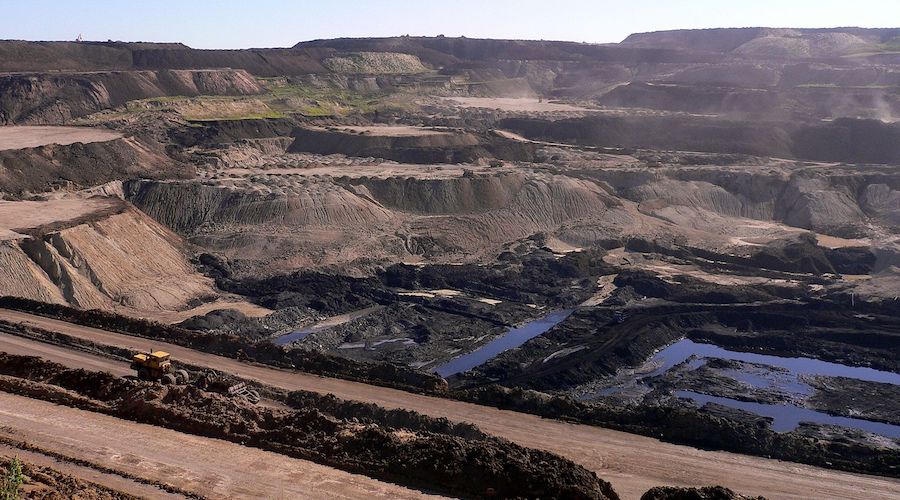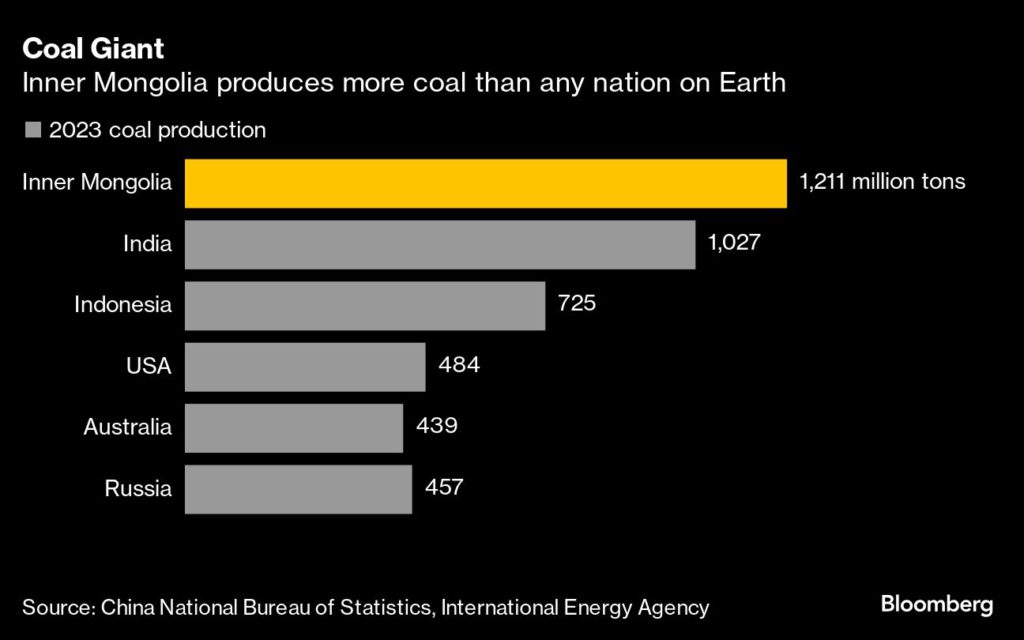China coal hub could lead its energy transition, researchers say

China’s largest coal-mining hub is primed to spearhead the country’s energy transition with a slate of planned clean power mega-projects in the desert, according to a report released Monday.
Inner Mongolia, which leads China in coal production this year, already has 88 gigawatts of wind and solar capacity, with another 170 gigawatts in the pipeline. That’s a combined total that would dwarf the power fleet of Germany.
With the right policy tweaks and infrastructure build-out, the region could feed China’s coastal megacities with cheap, carbon-free electricity, researchers from WaterRock Energy Economics and the Centre for Research on Energy and Clean Air said in a report.

“If done correctly, the expansion of large-scale clean energy bases in Inner Mongolia can increase wind and solar generation to meet local power consumption growth and increase the share of renewable exports,” analysts including Liutong Zhang at WaterRock said in the report.
Long-distance power lines have helped connect the region’s coal and renewable power plants to Beijing, as well as Shandong and other densely populated coastal provinces. But the lines are underutilized and still carry mostly coal power, creating an opportunity for more wind and solar expansion to feed them.
Inner Mongolia’s clean energy exports to coastal areas are already cheaper than existing electricity rates and coal plants, the researchers said. Increased power market liberalization and inter-provincial electricity trading could help drive further expansion, they said.
The autonomous region is home to four planned mega-bases expected to comprise eight gigawatts of solar, four gigawatts of wind and four gigawatts of coal power. These should be developed in conjunction with long-distance power lines to make sure the infrastructure is properly utilized, the researchers said.
The government should also re-think the plan to include coal in the projects, the researchers argue. They’re designed to help stabilize the intermittent flows of wind and solar, but cheap batteries, improved transmission technology and existing underutilized power plants in the region can play that role at a reduced cost, they said.
Column: Miners, investors see scope in energy transition but struggle with choices
{{ commodity.name }}
{{ post.title }}
{{ post.date }}

Comments